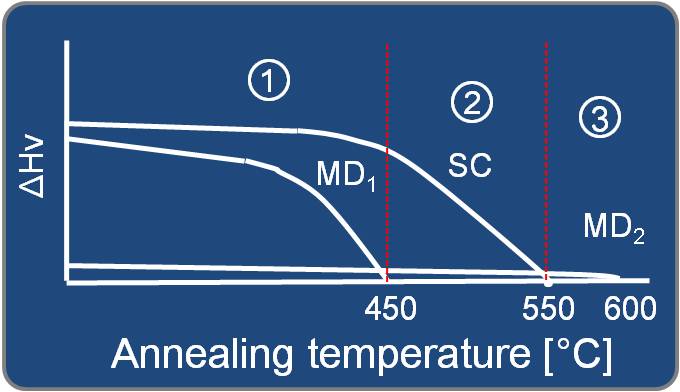- 藏本 明
KURAMOTO, Akira
-

TMS 2011 Annual Meeting & Exhibition, San Diego, California, USA
Post-irradiation annealing behaviorof microstructure and mechanical property
studied by positron annihilation and three-dimensional atom probe
2 Japan Atomic Energy Agency
3 Research Reactor Institute, Kyoto University
Introduction
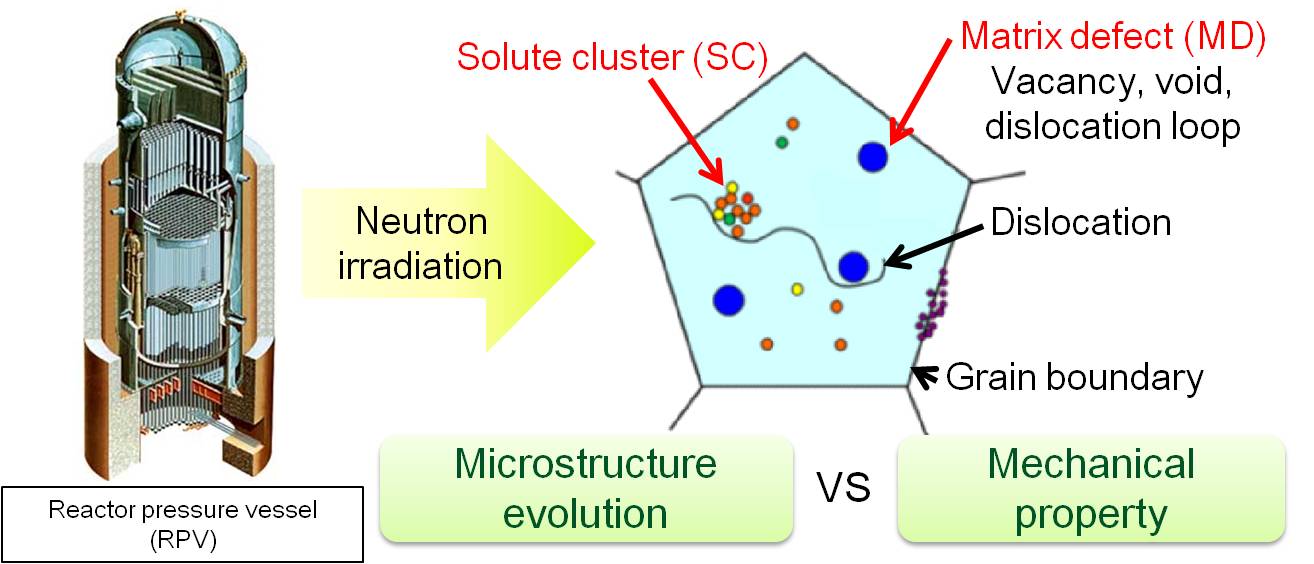
Previous experimentn
Effect of dose on hardening
MDs, SCs (Cu-Mn-Si-Ni-clusters) formed by neutron irradiation.
ΔHvSC : Estimation from SCs by Russell Brown model*
ΔHvMD=ΔHv(Experimental) -ΔHvSC
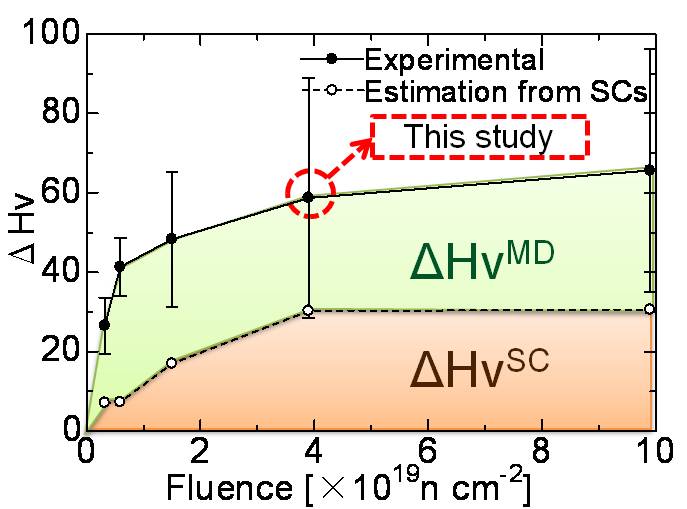
* K.C. Russell and L.M. Brown, Acta. Metall. 20 (1972) 969.
Experiment
Table.1 Chemical composition (wt.%)

JMTR (Japan Materials Testing Reactor ) Annealing condition
Irradiation temperature : 290 ± 2℃
Dose (>1MeV) : 3.9 × 1019 n cm-2
Flux (>1MeV) : 1.8 × 1013 n cm-2 s-1
Temperature : from 250 to 600℃ every 50℃
Time : 30 min.
Vacuum : below 1 × 10-3 Pa
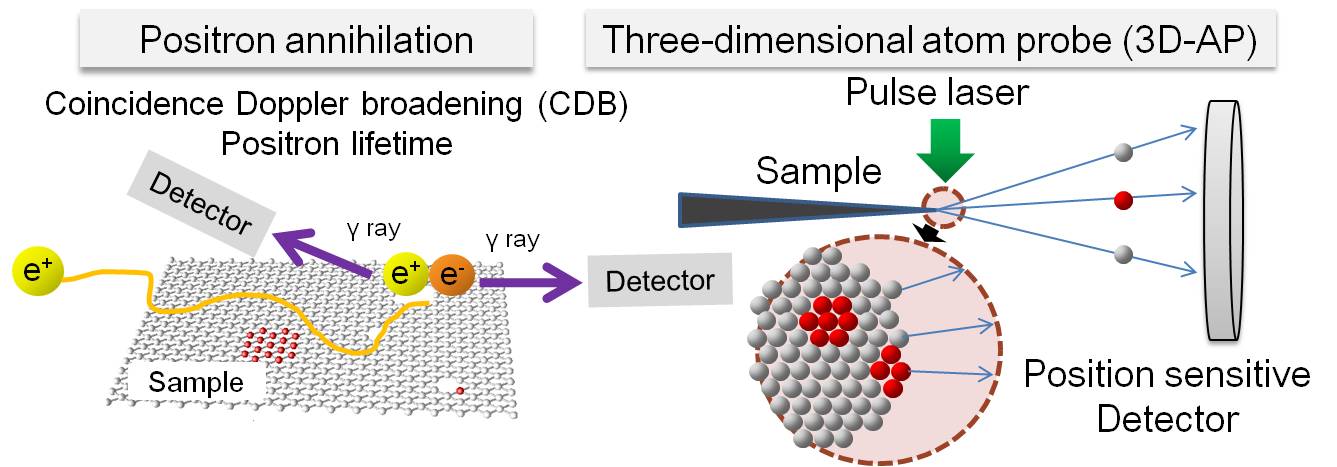
Results & Discussion
CDB
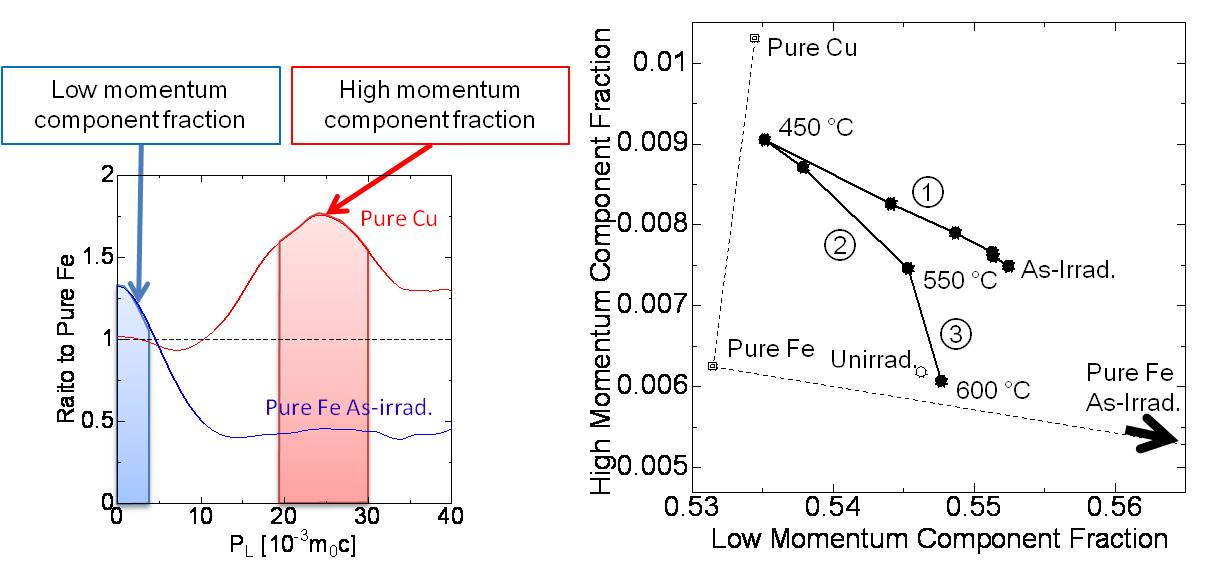
Table.2 Recovery stages

Average positron lifetime (τav)
① MD1s recover.
② SCs (Cu-rich clusters) recover.
τav is lower than that of unirradiated because the positron lifetime of Cu bulk is about 110 ps.
③ MD2s recover.
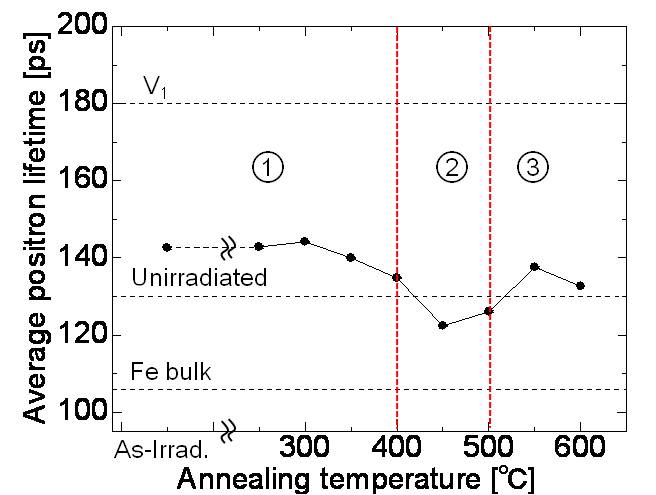
3D-AP
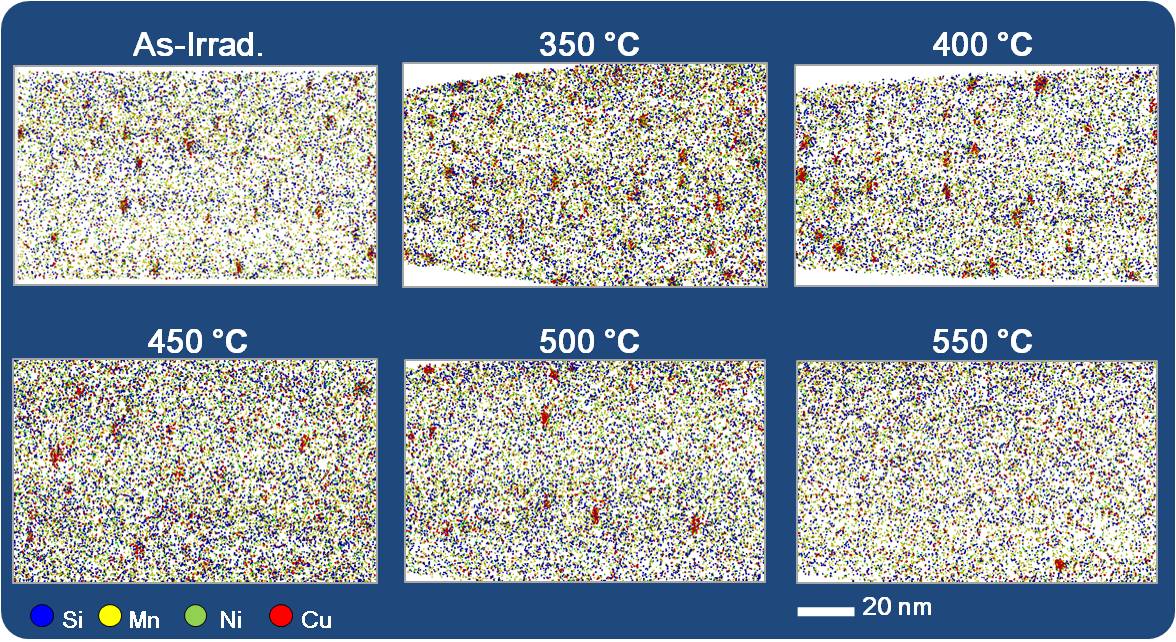
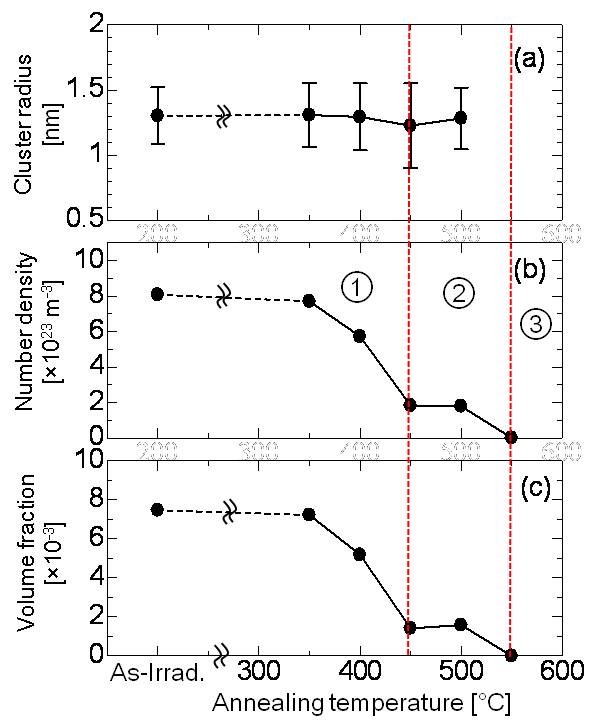
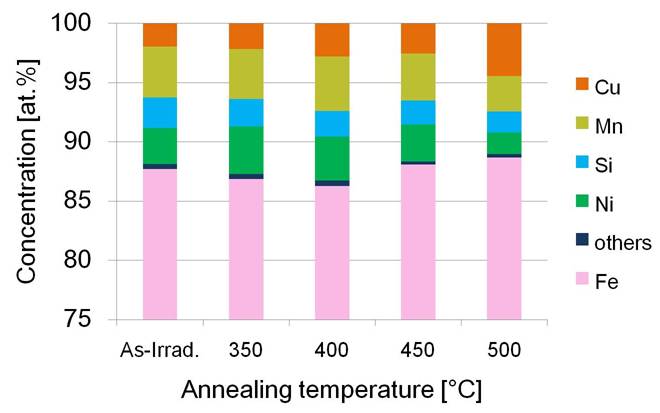
Formation of Cu-Mn-Si-Ni cluster in as-irradiated
① SCs rapidly decrease from 350 to 450℃.
② SCs disappear at 550℃.
Vickers microhardness
Most of MDs recover up to 400℃
The hardening is caused by SCs at 400℃ or higher.
The estimated values of ΔHvSC is similar to experimental values at 400℃ or higher.
The estimation of ΔHvSC is valid.
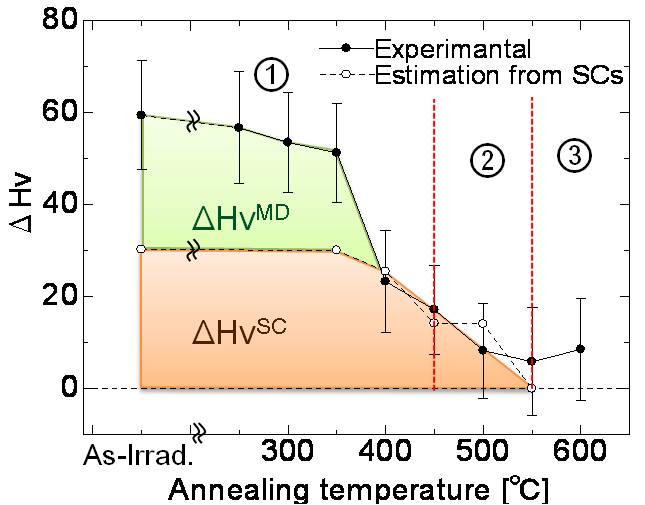
Summary
Recovery stages;
① Recovery of MD1s from 300 to 450℃
② Recovery of SCs up to 550℃
③ Recovery of MD2s up to 600℃
